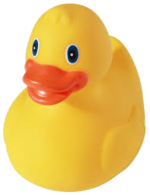Plastics: Difference between revisions
From DT Online
mNo edit summary |
(Added Template) |
||
| Line 27: | Line 27: | ||
</span> | </span> | ||
---- | ---- | ||
{{Thermoforming Buyers Guide}} | |||
[[Category:Materials and Components]] | [[Category:Materials and Components]] | ||
[[Category:Working Plastics]] | [[Category:Working Plastics]] | ||
Revision as of 14:51, 18 November 2016
Description
Synthetic* Plastics are chemically produced from oil and a wide, possibly infinite, variety is possible, but they all fit into one of two groupings:
- Thermoplastics - these can repeatedly be softened by heating and will return to a rigid state when cooled.
- this group includes: Acrylic, Polycarbonate (PC), Polyethylene, and Polypropylene.
- Thermosets - these are initially ‘cured’ (or set), often by mixing with a ‘hardener’ which creates a heat producing (Exothermic) chemical reaction and, once set cannot be softened again by further heating.
- this group includes: Polyester Resin, Epoxy Resin, Bakelite and Melamine.
*Note: Several natural materials may also be classified as Plastics. These include: Cellulose, Horn, Amber, and Shellac.
Plastics are formed by long chains of carbon based molecules, or Polymers, strongly bonded to each other. The Polymer Chains are either joined to each other with weak van der Vaals Forces to create Thermoplastics or much stronger Cross-Linking which results in Thermosets.
Safety Point!
- Heating plastics may generate fumes so always ensure good ventilation or extraction and avoid inhalation.
- Always use a separate plastics oven and do no use it afterwards for heating food.
- Plastics such as ‘Perspex’ are very Brittle materials so wear eye protection when cutting and shaping them.
- Wear gloves when handling hot plastics













